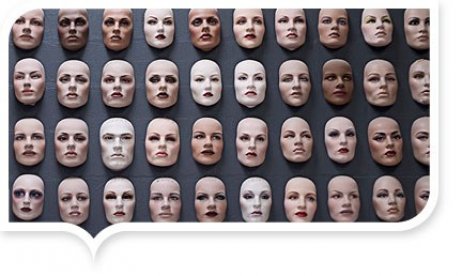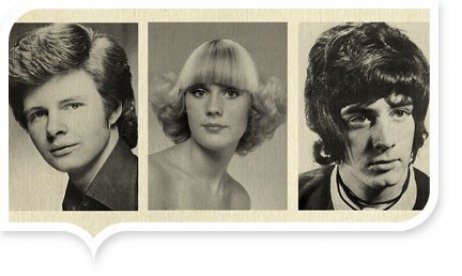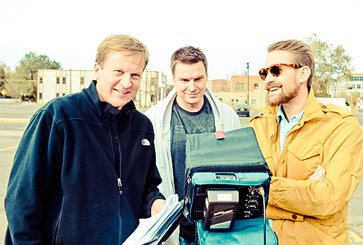Insights
A shout-out to “old” media.
There seems to be a lot of focus these days on “new media” – creative ways of reaching consumers that break through ordinary clutter and even gain recognition from our peers. In fact, we often feel compelled to invent new and different tactics in the effort to stay on the edge of what technology offers.
But what we sometimes forget in all this forward thinking, is that consumers still use traditional media - quite enthusiastically. And that the most effective advertising always starts with our target audience - not with the idea of our doing something cool for the sake of coolness.
There will always be new ground to break. However, with many clients, the best answer often starts simply, with a redesigned website, a great print ad or well-executed radio or TV spot. Our thinking goes like this: Make sure your “old” media is working as well as it can before you race into new territory. Are your print ads compelling? Is your website search-engine optimized and content-rich? Are your broadcast efforts working as well as they can, targeting the right group of people? Are your traditional media campaign efforts (print, outdoor, broadcast, website, direct mail) reinforcing one another with a relevant brand message that appeals to your target audience(s)?
Often in the chase for the new, it’s easy to lose sight of making sure your advertising fundamentals are sound. New media opportunities are exciting, but these new channels and technologies will work best for your brand only when the so-called “traditional” aspects of your marketing are working as hard as they can. To your consumer, a brand message is a brand message, whether it’s a billboard, a myspace page, mobile marketing campaign, viral effort or print ad.
Old media is still relevant. It just needs a good makeover every now and then.
Why everything is a media channel.
These days, campaign elements include nearly every touch point a customer can have with your business. Opportunities for advertising and design have long since ventured beyond the traditional media and new media formats. Customers assume, consciously or subconsciously, that their brand experience with your company will be carried through the advertising or design that piqued their interest all the way to the actual use of your product or service and beyond.
As an example, here's a brief list of elements we've created recently that are all brand touch points, but aren't the typical playing fields of ad agencies and design firms: employee uniforms, product designs, greeting cards, apparel designs, self-directed sales kits, product prototype manufacturing, wayfinding, interior design, and lots more.
In a world that's getting flatter and smaller every day, it's a valuable reminder to recognize that customers want a seamless relationship with your brand, and truly feel rewarded for choosing your offering when their total brand experience is engaging and consistent.
Branding doesn't begin and end with your logo, ads and marketing materials.
In fact, it's only the beginning.
Measuring strategy.
Determining the success of a potential ad campaign is an interesting proposition. You can endlessly weigh your media options and test creative executions into an early grave, but rarely does anyone ask, “How do you know if the strategy is right?” Here are guidelines to help you evaluate your thinking.
Some short-term indicators:
Gut: Make sure the strategy feels right in your gut. Your instinctive reaction
to the strategic idea is the first and best way to gauge its strength. You’ve reviewed all the background information, you’ve poured through target research...it’s all there telling your gut what to do. If you’re excited about
the strategy, and you can’t wait to get going, you’re probably on to
something good.
Other people’s reactions: If your agency’s creative and media personnel get excited about a strategic premise, it’s an excellent sign that it will have some impact. Likewise, if our clients are jazzed by the strategy after seeing it even in a Powerpoint format, it’s a great indication.
Springboard effect: Is the strategic premise springboarding new and fresh tactics? If the strategy begets new ideas, it’s probably right on. A good sign: The strategy is taking your campaign to new places untried and even unknown to you or your competitors.
Energizer effect: Does everyone in the client’s company get excited when they hear about it? Does it make employees and staff feel good about what they do? This is arguably the best measure of “rightness”: you’ve found a compelling way to tell the truth, and people see it and identify with it. And they want to hear more.
Of course, once the campaign is up and running, there are more tangible ways to measure the strategy:
Obviously, business results: Are sales up? Are objectives being met?
Creative awards: While awards really gauge the abilities and talents of the creative staff, it’s not surprising that those campaigns garnering the most creative recognition start with a solid strategic direction, enabling the creative team to do their best work.
Impact: Does the campaign break out of its boundaries? Does it get talked about rather than just seen and heard? Do people enjoy it?
Longevity of the idea: A great way to know if your strategy was right is by how long it lives before someone asks, “Let’s go back to the drawing board.” Campaigns with sound, insightful strategic directions live longer because they work harder.
Strategy is the unseen framework behind great marketing and advertising campaigns. When it works well, you’ll want to protect it. Perhaps that’s the best measurement of all.
Are you marketing a zombie brand?
Take a look at your business category. Does your advertising look and feel like that of your competitors? Do you see too many of your category’s cliches in your overall messaging? Do you analyze your competitors’ advertising and find it difficult to discern anything different about what they are selling compared to your own benefits? Can your customers honestly tell you apart from your competitors?
If this is your scenario, you may have a zombie brand: moving within a slow-moving pack, hunting for the same customers as your peers. To your potential customers, your brand is shuffling down the street with a mob of folks who look and sound just like you. (Hopefully, without the moaning and outstretched arms.)
We think that the most successful brands have distinct personalities, just like memorable, likeable people. Sure, they may follow certain rules of their categories, but great brands usually stand for something. They say, "we stand for this," instead of, "we stand for what everybody else stands for, too.”
So if yours is a zombie brand, find out what truly separates you from the pack that makes a meaningful difference to your customer. If you can't find one, it may be time to take a fresh look at your product offering.
And when you are ready to advertise, don’t hesitate to kill the remnants left over from your “zombie” campaign. There’s no harm done here, a “me, too” campaign is lifeless from the beginning.
Remember: aim for the head. A mere body blow won't do.
You are your advertising campaign.
When a prospect calls or comes into your business, have you planned and determined exactly how they will be treated? Have you considered what you will say to them and how you want to make them feel? You probably have. You want them to have a very intentional experience with your business.
It's just as important to think through the creation of your communications campaign and your advertising. Because to a potential customer, every one of the ads and messages you create IS your business. The language it uses, the imagery, the personality it conveys; even the way your ad is crafted (fonts, layout, type treatments) is a representation of your business. In fact, simply having a well-crafted ad, website, TV spot or logo says something to your target about your offering. It might communicate that you are thoughtful, that you understand their needs, that you take time, that you are precise - basically, that you respect your prospect's time, money and intelligence.
Unfortunately, we all see communications that, whether implicitly or explicitly, communicate a lack of care by having a lack of craft. It takes time to create a good campaign - not just in strategy, but in execution as well. And it's all too frustrating to see a solid strategy executed ungracefully.
Think about the person your ad needs to talk to, what they will want to know about you, and how you want them to feel about you. Then spend just as much time crafting the message as you did developing the strategy. Why? Because the executions are what your prospects will see. And you want them to see you.
After all, your advertising is your business.
How to hire an ad agency (and feel good about it).
Hiring an ad agency can be daunting. We’re not clients, but we have learned what makes good client-agency relationships. Here are a few thoughts:
Do you really need an agency? If you have more than a few communications needs outside of your company’s available time or expertise, you may. If you enjoy doing any of this yourself, ask if you’re willing to give it up.
How do you make a short list? First, ask other business owners or marketing directors you know. And chances are you’ve been contacted by sales representatives – ask them which agencies return their calls. Peruse the local business press. Or do an old-fashioned Google search. If you get a good feeling, call to arrange a meeting at your place or theirs.
What to look for? People who listen and are genuinely curious about your business. They shouldn’t act smarter than you. Turn up your BS meter when they do their spiel. Get a sense of whether they like one another. And most importantly: you should like them. If you think you’d avoid them at a party, take a pass.
Should you hire an ad agency with experience in your category? Yes and no. Experience brings wisdom. But an agency that is new to your category can offer fresh perspectives.
What questions should you ask? Find out who would be working on your business and be sure to meet the key players. Are the senior people pitching your business going to run your account, or will it be handed off to others?
If they show you creative work or case studies, ask when it was done, who did it and if those employees are still there. Your work could end up looking very different than what you see in a credentials presentation.
What should it cost? It really depends on the scope of work and the amount of attention your business needs. Be careful to weigh cost and value with creativity and capability. A good agency will explain how an ideal client/agency relationship works, and how you’ll work together going forward.
The best relationships are based on clear expectations. Here’s hoping you find a match.
Calculating risk.
We all have our comfort zones – what’s easy, what we’re good at, what we hope to gain. Risk is relative, defined by our perspective. Anything beyond what we know feels, well, risky. But as obvious as it seems, it helps to be reminded: creating good advertising isn’t about us. It’s about resonating with our target audience, and that target may come from a different point of view than we do.
If we work hard to understand a given audience, and put ourselves in their shoes, what we initially define as risk will often turn to “no-brainer” when we take the viewpoint of our target. The hard part, of course, is setting aside our own perspective – which involves risk of the more personal kind.
The ideal place for risk to live is just outside our own comfort zone – where the personal risk is mostly offset by the rewards of sound strategy.
Of course, it never hurts to keep the Tums on hand and chew with gusto.
Long live the idealists.
Clients are faced with a certain dilemma when creating a communications campaign. Should they hire generalists; that is, a full-service ad agency, or specialists; group(s) with a skillset in one area of communications. As a full-service firm, we are sometimes labeled the former. But while we do execute across a broad array of tactics (advertising, design, interactive, guerrilla, etc.), we like to think of ourselves as “idealists.”
We believe the simple idea should always drive the execution. The idea needs to be applied to the most effective tactics and developed to its most thoughtful execution using the unique features and ability of each medium. Starting with the idea and knowing your audience is everything. This is where great campaigns - and great individual executions - come from.
Today there is a proliferation of communications gurus. There are industry-specific ad specialists, web specialists, out-of-home specialists, radio specialists, and the list goes on. The existence, and in most cases, success of these groups comes from the natural understanding that if a person or company does one thing, they are much more likely to do that thing very well. But in communications, there is another side to this debate. When people specialize in one task, they tend to evolve into pursuing one way to do that task. Eventually, the work looks, feels and sounds the same for each client, no matter the business category. Repetition and practice make perfect for say, a special teams football squad. But in communications, cookie-cutter sameness across clients and within categories can be the enemy.
So, as you develop your next campaign, think to yourself: “idea first.”
Idea first: What is the idea?
Idea first: Where will this idea have the most impact on our target? (In his living room? At her place of work? Online? At a restaurant? In a sales presentation?)
Idea first: What is the best way to communicate this idea within this space?
The debate about using generalists vs. specialists will go on. We simply want to add a new group to the discussion. Idealists.
Thinking inside the box. (Or at least to the edges.)
In the late ‘80s and early ‘90s, the concept of thinking “outside the box” began to permeate corporate America. The world of advertising led the charge. At the time, this approach was brilliant in its simplicity. It let people know that they needed to think, act and do things differently because the outside world was changing. Then came the dot-com era of advertising and “outside the box” became “outside of reality.” In their eagerness to create whole new ways of thinking, many advertisers lost sight of basic business principles. In some cases, creative executions strayed so far from their objectives and their target, that they were speaking a different language to their customers. Not good for business.
We prefer the idea of “pushing the box.” This means you are actually still living inside the world of reality, but you are tied to basic, fundamental truths about what you need to accomplish, who you are speaking with and how you are speaking to them. This is where true creativity is born, because the answer must be grounded while also revolutionary. You force yourself to create ideas that are strategically sound, but require absolute creativity in their execution.
Great advertising comes from taking a simple, true business premise (e.g. an insight about how people think, use or feel about your product) and then pushing that idea creatively until it stretches the box sideways a bit, but never quite breaks outside of it. You might read this and say, all the great work of the past was “outside of the box.” We would argue that the real greats were simply pushing the box…really hard. Consider “1984”, the classic TV spot for Apple by Chiat/Day. This creative was absolutely and soundly based on the premise that, at the time, PC users were tired of not having choices, being told what they needed in a PC and then being given a complex, difficult-to-use product.
Appropriating George Orwell’s 1984 as a metaphor for the Mac revolution was brilliant. But solidly in the box.
Marketing shouldn't have bad hair days.
Remember when you first got your high school yearbook? You grabbed your copy and immediately began scouring the photos? But you weren’t looking to see how your friends looked. You were looking for yourself and beginning to formulate your excuses as to why you were having such a bad hair day. Looking at yourself first is a very natural reaction. (Don’t be ashamed, everyone does it.) But in marketing and communications, that instinctive self-referential response isn’t the most effective. After all, it’s our customers we need to please, not our own ego. And what they do every day, and what they read and watch every day, and their likes and dislikes may be very different from our own.
So whatever you’re trying to sell, be it an idea, a product, a service or simply a place in their mind, remember: it’s not about you, it’s not about your agency, it’s about them – your customers. The smart, good people who will hopefully choose to support your business as a result of how you speak with them. Do what your mother told you in grade school and put yourself in their shoes. Try it; you’ll be surprised at how infrequently you have to make excuses for your hair, and how often you will create a compelling, and above all effective, campaign.
-
Page 3 of 46 pages
- < Previous
- 2
- 3
- 4
- Next >













